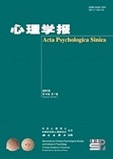|
|
A high-efficiency and new online calibration method in CD-CAT based on information gain of entropy and EM algorithm
TAN Qingrong, WANG Daxun, LUO Fen, CAI Yan, TU Dongbo
2021, 53 (11):
1286-1298.
doi: 10.3724/SP.J.1041.2021.01286
Cognitive diagnostic computerized adaptive testing (CD-CAT) includes the advantages of both cognitive diagnosis (CD) and computerized adaptive testing (CAT), which can offer detailed diagnosis feedback for each examinee by applying fewer test items and time. It has been a promising field. An item bank is a prerequisite for the implementation of CD-CAT. However, its maintenance is a very challenging task. One of the effective ways to maintain the item bank is online calibration. Till now, there are only a few online calibration methods in the CD-CAT context that can calibrate Q-matrix and item parameters simultaneously. Moreover, the computational efficiency of these methods needs to be further improved. Therefore, it is crucial to find more online calibration methods that jointly calibrate the Q-matrix and item parameters.
Inspired by the SIE (Single-Item Estimation) method proposed by Chen et al. (2015) and information gain feature selection criteria in feature selection, an information gain of entropy-based online calibration method (IGEOCM) was proposed in this study. The proposed method can jointly calibrate Q-matrix and item parameters in a sequential manner. The calibration process of the new items was described as follows: First, for the new item j, the q-vector can be calibrated by maximizing the information gain of entropy-based on the basis of the attribute patterns of examinees and the examinees’ responses to item j. Second, the item parameters of the new item j are estimated by the EM algorithm based on the posterior distribution of examinees’ attribute pattern, the examinees’ responses to item j, and the q-vector estimated in the first step. The first and second step are repeated for all other new items to obtain their estimated Q-matrix and item parameters item by item. Two simulation studies were conducted to examine whether the IGEOCM could accurately and efficiently calibrate the Q-matrix and item parameters of the new items under different calibration sample sizes (40, 80, 120, 160, and 200), different attribute pattern distributions (uniform distribution, higher-order distribution, and multivariate normal distribution), the different number of new items answered by examinee (4, 6, and 8), and different item selection algorithms (posterior-weighted Kullback-Leibler, PWKL; the modified PWKL, MPWKL; the generalized deterministic inputs, noisy and gate model discrimination index, GDI; and Shannon entropy, SHE). Furthermore, the performance of the proposed method was compared with the SIE, SIE-R-BIC, and RMSEA-N methods.
The results indicated that (1) The IGEOCM worked well in terms of the calibration accuracy and estimation efficiency under all conditions, and outperformed the SIE, SIE-R-BIC, and RMSEA-N methods overall. (2) The accuracy of the item calibration increases as the sample size increases for all calibration methods under all conditions. (3) The SIE, SIE-R-BIC, RMSEA-N, and IGEOCM performed better under the uniform distribution and higher-order distribution than under the multivariate normal distribution. (4) The number of new items answered by the examinee had a negligible impact on the calibration accuracy and computation efficiency of the SIE, SIE-R-BIC, RMSEA-N, and IGEOCM. (5) The item selection algorithm in CD-CAT affects the Q-matrix calibration accuracy of the SIE and IGEOCM methods. Under the higher-order distribution and multivariate normal distribution, the SIE method and IGEOCM had higher Q-matrix calibration accuracy when the item selection algorithms were MPWKL and GDI.
On the whole, although the proposed IGEOCM is competitive and outperforms the conventional method irrespective of the calibration precision or computational efficiency, the studies on the online calibration method in CD-CAT still need to be further deepened and expanded.
Related Articles |
Metrics
|




